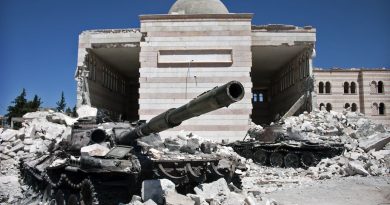Old habits die hard: Can Russia and the US ease tensions in Eastern Europe?
Even though the Cold War ended decades ago, Russia and NATO military powers continue to compete with one another, conducting large scale military exercises to develop tactics and hone certain combat-related skills. For many, the collapse of the Soviet Union — and the subsequent economic instability — caused many to hope that militarism in Russia would die down, as well as military tensions between Russia and NATO. However, as the U.S. finds itself in the midst of multiple wars in the Middle East, we are beginning to witness the re-ignition of potential military tensions toward Russia, due to their interference in the Ukrainian and Syrian civil wars. Multiple military exercises have been conducted over the past couple years, most being over European countries close to Russia’s border, such as Poland, Estonia and Latvia. NATO believes holding regular military exercises between member countries ensures the safety and stability of the organization NATO. NATO stated that the exercises are in part a retaliation to Russian intervention in Ukraine and Syria, threatening Russian interests in either region. Meanwhile, Russia continues to conduct similar military exercises near its own borders, showing no hesitation in arming pro-Russian rebels or the Syrian government. Perhaps the U.S. isn’t as far out of the Cold War as we thought.
Concern regarding current NATO military exercises started several years ago, shortly after the start of the Ukrainian civil war. Ukraine fell into rioting and civil war when the president of Ukraine, Viktor Yanukovych, announced that the country would not join the European Union, even though many Ukrainians desired to end close ties with Russia. Ultimately, this led Russia to begin arming the pro-Russian rebels in Ukraine and annexed the Crimean Peninsula, as well as other territories in far eastern Ukraine. When the U.N. and NATO called for Russia to cease intervention and annexation, Russia refused to yield, starting joint military drills with neighboring countries such as Serbia, according to Russia Today. This prompted NATO to conduct similar military drills, but they were remarkably different in terms the number of servicemen and amount of armor-NATO drills also involved a larger collaboration of allied countries, such as Poland, Germany, Latvia, Estonia and several Scandinavian countries. In 2014, these tensions came to a head. Russian armor was seen by satellite imagery assisting rebels in the Crimean Peninsula and eastern Ukraine. In 2015, Russian president Vladimir Putin admitted that several military advisors were working in rebel-occupied areas of Ukraine according to the Guardian. Since then, Russia continues to fund and arm remaining rebel groups in Ukraine, and NATO continues to increase its number of military drills to meet any potential conflict that could arise from further military provocation. Although it is unjustified and illicit for Russia to tamper with other countries’ political affairs, are NATO military exercises as a retaliation really necessary?






